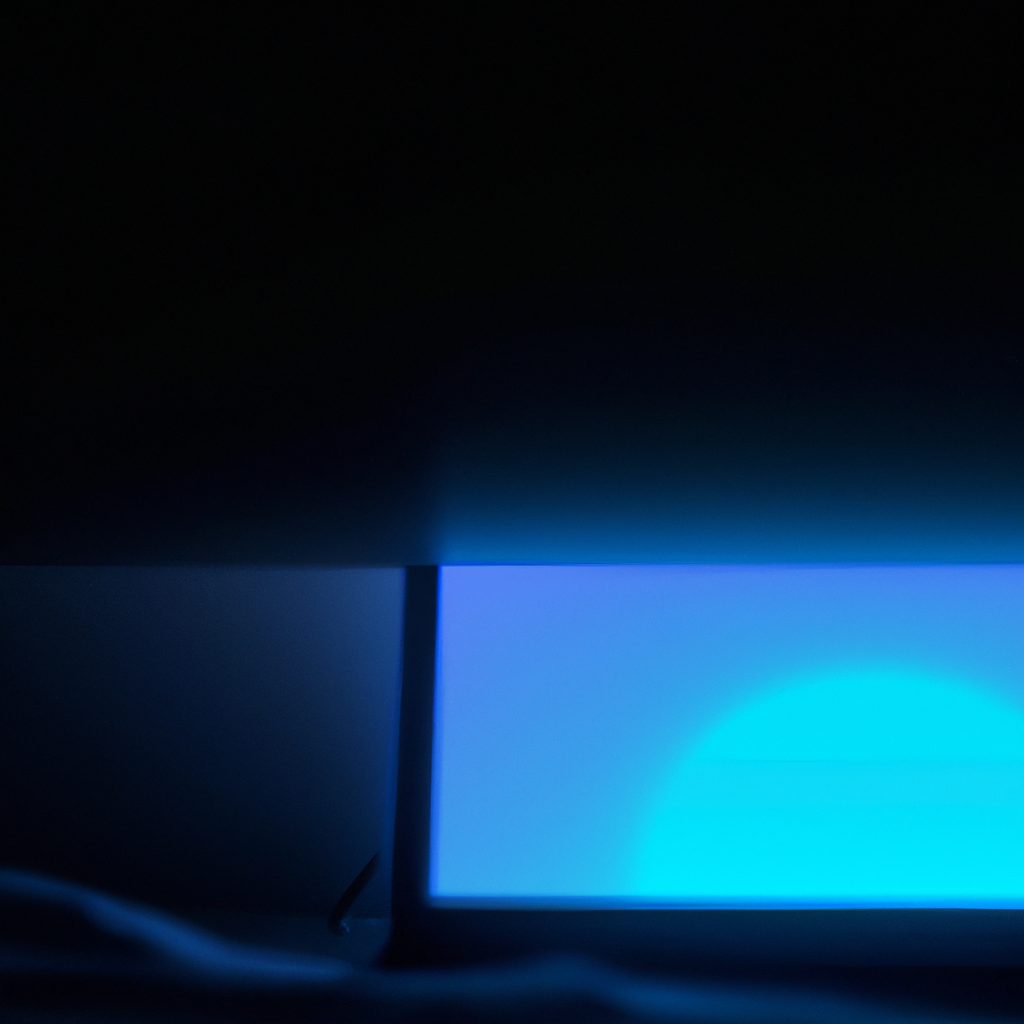Blue Light Exposure and Sleep Patterns: Understanding the Impact
In today’s digital age, we are constantly exposed to screens emitting blue light from our digital devices. From smartphones and laptops to televisions and tablets, it’s easy to lose track of the amount of time we spend in front of screens. But, what impact does blue light exposure have on our sleep patterns? In this article, we will explore the effects of blue light exposure on sleep patterns, the circadian rhythm, melatonin production, and sleep disorders.
Understanding Blue Light Exposure
Blue light is a type of light on the visible spectrum that has a short wavelength and high energy. It is present in sunlight, but also emitted by digital devices such as smartphones, laptops, and televisions. Blue light exposure has been shown to have both positive and negative effects on the body, depending on the time of day and duration of exposure.
The Circadian Rhythm and Melatonin Production
The circadian rhythm is the body’s internal clock that regulates sleep and wake cycles. It is influenced by environmental cues such as sunlight, which helps to regulate the release of the hormone melatonin. Melatonin is produced by the pineal gland in the brain and plays a crucial role in promoting sleep.
Exposure to blue light during the evening or night disrupts the circadian rhythm by suppressing melatonin production. This can lead to difficulty falling asleep and staying asleep, as well as a decrease in sleep quality. Studies have shown that exposure to blue light before bedtime can delay the onset of sleep by up to three hours and reduce overall sleep duration.
Digital Devices and Screen Time
Digital devices such as smartphones, laptops, and tablets emit high levels of blue light, particularly in the evening and at night. The use of these devices before bedtime can disrupt the circadian rhythm and suppress melatonin production, leading to sleep disturbances.
In addition to disrupting sleep patterns, excessive screen time can also cause eye strain and increase the risk of developing sleep disorders. This is particularly concerning for children and teenagers, who are more susceptible to the effects of blue light exposure due to their developing eyes and brains.
Light Pollution and Sleep Quality
Light pollution refers to the excessive and artificial light that disrupts natural light cycles. This can include streetlights, car headlights, and even the blue light emitted by digital devices. Light pollution can interfere with the circadian rhythm by suppressing melatonin production and disrupting sleep patterns.
Reducing blue light exposure before bedtime and minimizing exposure to light pollution can improve sleep quality and reduce the risk of developing sleep disorders.
Managing Blue Light Exposure
Reducing blue light exposure before bedtime can help to regulate the circadian rhythm and improve sleep quality. Here are some tips for managing blue light exposure:
– Use a blue light filter on digital devices or wear blue light blocking glasses
– Avoid using digital devices for at least 30 minutes before bedtime
– Keep the bedroom dark and cool to promote sleep
– Use blackout curtains or an eye mask to block out light pollution
– Limit screen time, particularly before bedtime
– Spend time outdoors during the day to promote natural light exposure
Conclusion
Blue light exposure can have a significant impact on sleep patterns, the circadian rhythm, melatonin production, and sleep disorders. Excessive screen time and exposure to light pollution can disrupt natural light cycles and lead to sleep disturbances. By managing blue light exposure and promoting natural light exposure, we can improve sleep quality and reduce the risk of developing sleep disorders.







